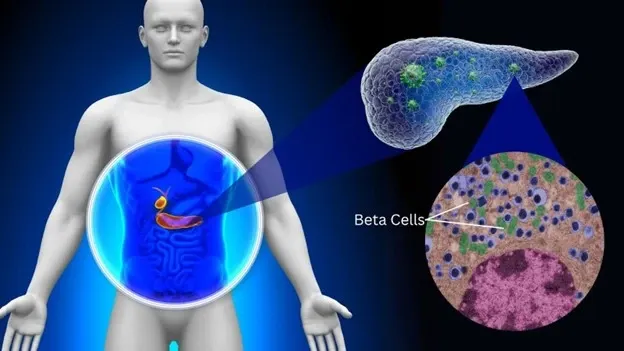Could Collagen Be Worsening Diabetes?

Synopsis
Key Takeaways
- Collagen is linked to worsening diabetes through amylin aggregation.
- Type 2 diabetes affects over 500 million people globally.
- Amylin clumping can damage insulin-producing cells.
- Fibrillar collagen I plays a crucial role in this process.
- The study suggests new directions for diabetes treatment.
New Delhi, July 1 (NationPress) Researchers at the Indian Institute of Technology (IIT) Bombay have discovered a previously unidentified factor contributing to diabetes in collagen, which is the most prevalent protein found in the human body and is exacerbating this blood sugar condition.
This groundbreaking study, featured in the Journal of the American Chemical Society, reveals how collagen facilitates the clumping of hormones in the pancreas, indicating a potential new target for drug development.
Type 2 diabetes, which impacts over 500 million individuals globally, arises when the body produces insufficient insulin—a hormone crucial for regulating blood sugar levels—or when cells become less responsive to insulin, leading to elevated blood sugar.
As the body attempts to release more insulin, it inadvertently increases the production of amylin, another hormone that assists in managing blood sugar post-meals.
The research team found that fibrillar collagen I—a significant element of the extracellular matrix—serves as a critical platform that accelerates the aggregation of amylin.
Misfolded amylin tends to aggregate, forming toxic clumps detrimental to cells, as explained by the researchers led by Prof. Shamik Sen from the Department of Biosciences and Bioengineering at IIT Bombay.
In diabetic pancreatic tissue, collagen I, which is abundant in connective tissues like skin and bones, becomes increasingly prevalent.
This amylin aggregation damages insulin-producing beta cells, rendering amylin even more toxic, which diminishes the body's capacity to control blood sugar and pushes individuals closer to full-blown diabetes.
Prof. Sen remarked, “It appears that the amylin physically coats the collagen surface, creating stable aggregates that are harder for cells to eliminate. This was a remarkably striking finding for us.”
In both diabetic mice and human pancreatic tissues, levels of collagen and amylin rose concurrently as diabetes advanced.
This research also sheds light on why certain diabetes treatments, which primarily focus on intracellular processes, may not effectively halt disease progression, according to the researchers.









